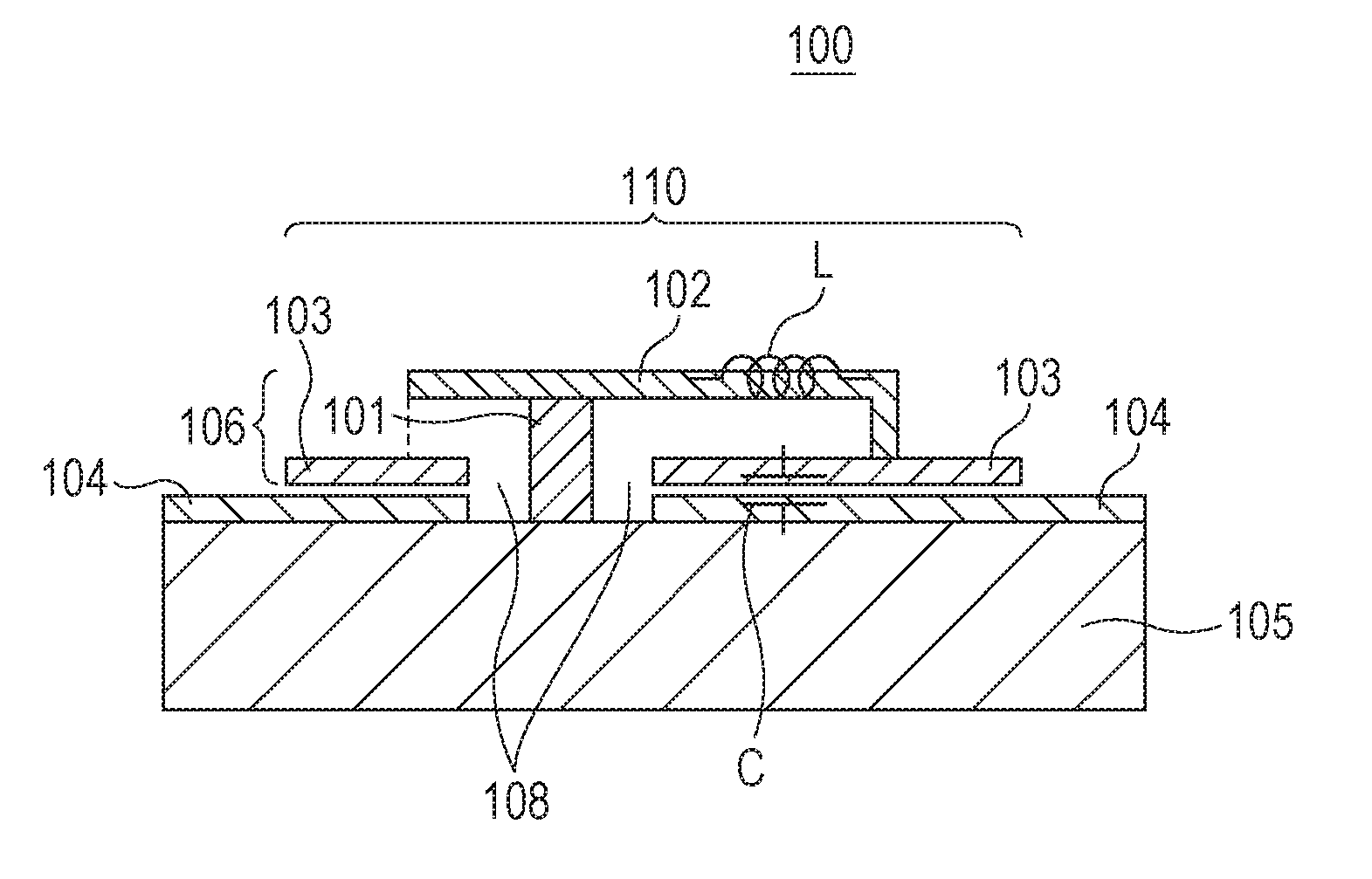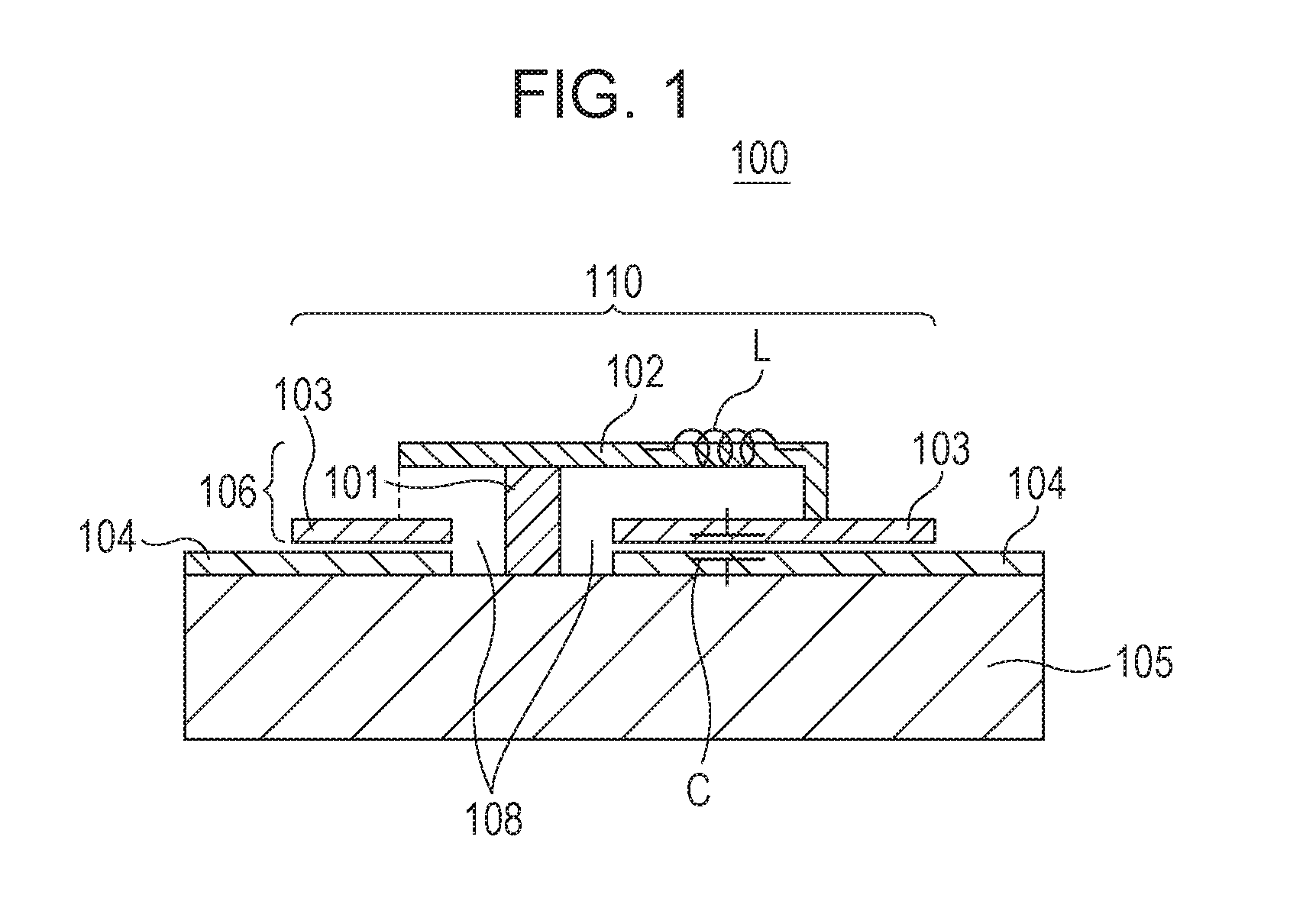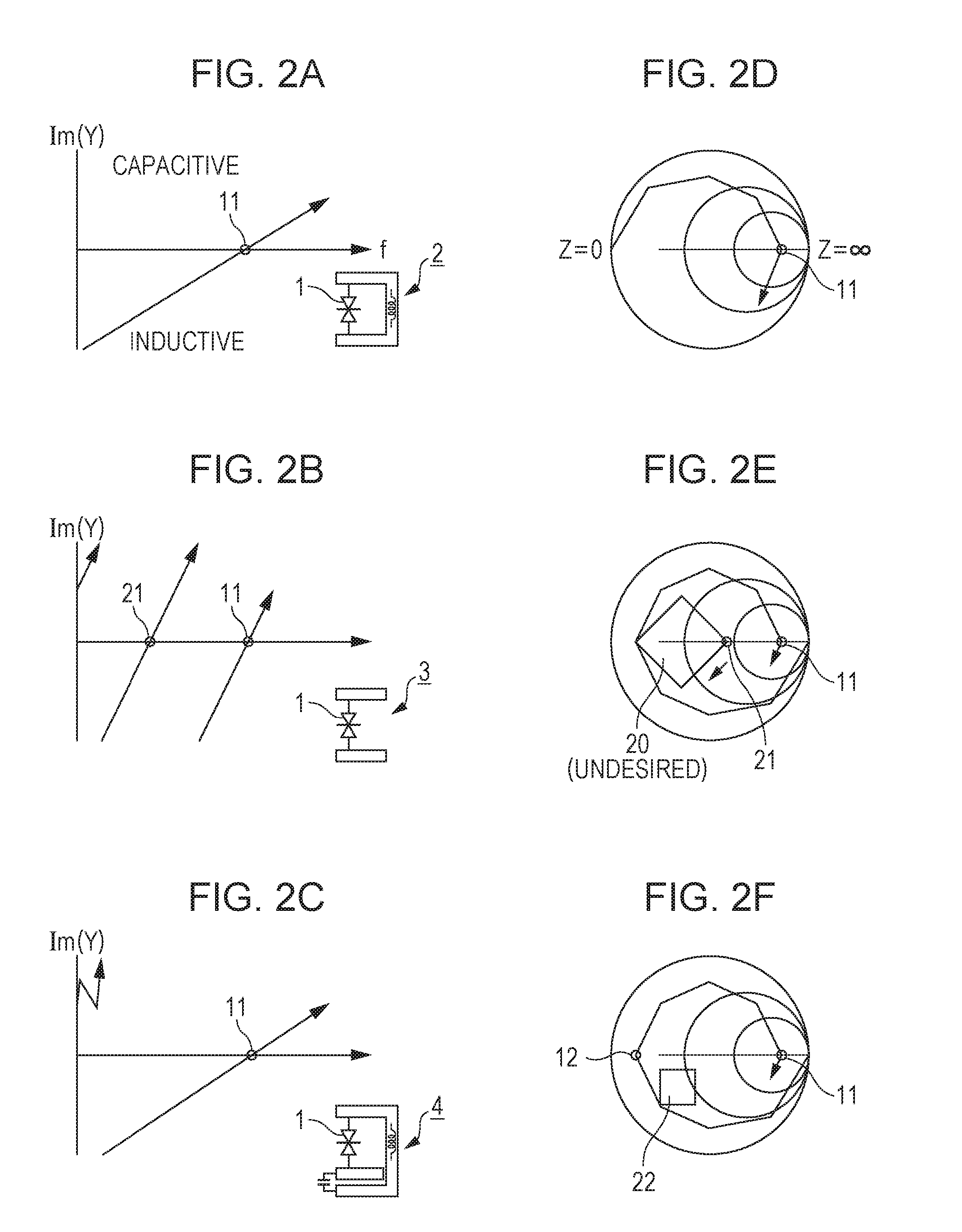Oscillation element and oscillator using the same
a technology of oscillator and oscillator, which is applied in the direction of oscillator generator, network simulating negative resistance, electrical apparatus, etc., can solve the problems of complex design and attenuation of oscillation at the desired frequency
- Summary
- Abstract
- Description
- Claims
- Application Information
AI Technical Summary
Benefits of technology
Problems solved by technology
Method used
Image
Examples
first exemplary embodiment
[0027]An oscillator that oscillates a terahertz wave includes an oscillation element provided with a negative resistance element and a resonator of a distributed constant type, and a power supply that supplies a bias voltage to the negative resistance element. The bias voltage from the power supply is supplied to the negative resistance element via a bias supply unit including an electric wire and a conductor. A parasitic low-frequency oscillation (parasitic oscillation) in the terahertz wave oscillator is generated in many cases because of a structure accompanied by this bias supply unit. Therefore, the bias supply unit is caused to have a characteristic in an oscillation element 100 according to the present exemplary embodiment. That is, a structure is adopted where a part of the bias supply unit is included in a part of a resonator 110 of a distributed constant type and is also capacitively coupled thereto.
[0028]Therefore, the bias supply unit is caused to have a characteristic i...
second exemplary embodiment
[0057]An oscillation element 200 according to the present exemplary embodiment will be described by using FIG. 4. FIG. 4 is a cross sectional view of the oscillation element (semiconductor die) 200.
[0058]The oscillation element 200 includes a negative resistance element 201 (hereinafter, will be referred to as “element 201”) and a resonator 210. The element 201 and the resonator 210 are arranged on a substrate 205. The resonator 210 includes a first conductor 206 (hereinafter, will be referred to as “conductor 206”) which includes a first conductive layer 202 (hereinafter, will be referred to as “conductive layer 202”), and also a second conductive layer 203 (hereinafter, will be referred to as “conductive layer 203”) and a second conductor 204 (hereinafter, will be referred to as “conductor 204”) provided with a third conductive layer. The element 201 is electrically connected to each of the conductors 204 and 206. It is noted that the conductor 204 may be referred to as the conduc...
example 1
[0073]An oscillator 350 according to Example 1 will be described. FIG. 6A is a schematic diagram of the oscillator 350, and FIG. 6B is a cross sectional view of the oscillation element.
[0074]The oscillator 350 uses resonant tunneling diodes as negative resistance elements 301a and 301b. According to the present example, since two resonators 310 of the distributed constant type are used, two RTD 301a and 301b are provided. The resonators 310 each include a first conductor 306 (hereinafter, will be referred to as “conductor 306”) and a second conductor 304 (hereinafter, will be referred to as “conductor 304”).
[0075]A first conductive layer 302, a second conductive layer 303, and the third conductive layer (second conductor) 304 are each a metallic layer using Ti / Pd / Au metal having a thickness of 200 nm. Hereinafter, these conductive layers are respectively referred to as metallic layer (first metallic layer) 302, metallic layer (second metallic layer) 303, and metallic layer (third me...
PUM
 Login to View More
Login to View More Abstract
Description
Claims
Application Information
 Login to View More
Login to View More - R&D
- Intellectual Property
- Life Sciences
- Materials
- Tech Scout
- Unparalleled Data Quality
- Higher Quality Content
- 60% Fewer Hallucinations
Browse by: Latest US Patents, China's latest patents, Technical Efficacy Thesaurus, Application Domain, Technology Topic, Popular Technical Reports.
© 2025 PatSnap. All rights reserved.Legal|Privacy policy|Modern Slavery Act Transparency Statement|Sitemap|About US| Contact US: help@patsnap.com



